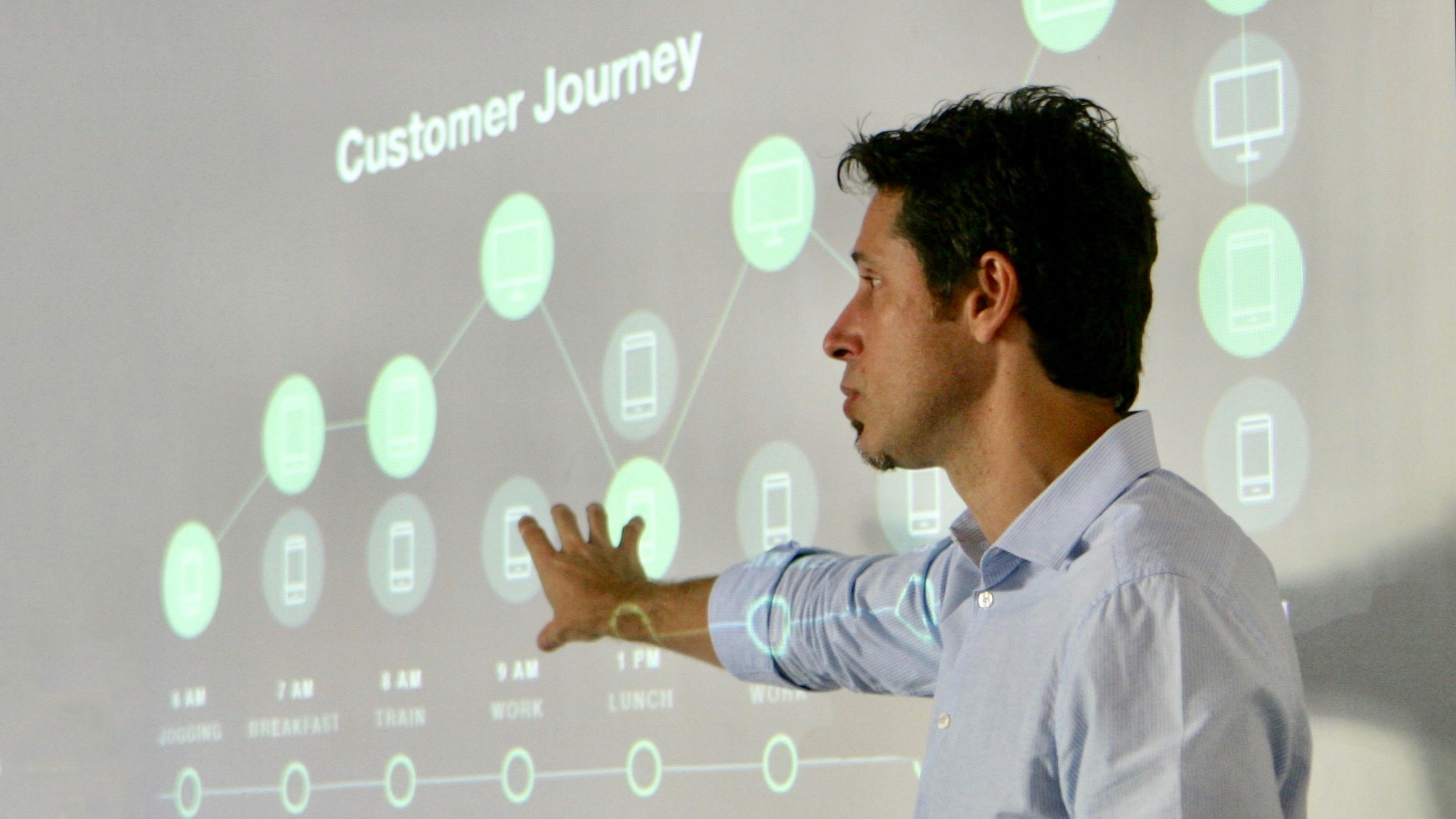Customer Experience: Systematize, prioritize and measure. How to win in the “age of the customer”
10 September 2018On the August 2018 issue of Revista Mercado, Gabriel Celemin, co-founder and partner at Giro54, wrote about the importance of the Customer Experience in today’s economy. The article was published in Spanish. Below is the English translation.
Customer Experience (CX) has existed for as long as there have been customers. With or without planning it, all companies arouse emotions in their clients as a result of their relationship with the brand. These emotions and memories –the Experience– are built up as people interact, not only with the product or service, but with all the company’s touchpoints: ads, offices and branches, systems, websites, apps, customer service or call centers. The path the client moves through before, during and after the purchase is called “Customer Journey”.
In something as simple as going to a meeting downtown: what options do I have? The bicycle satisfies my ecological conscience, the subway and bus minimize costs, the taxi and car let me travel comfortably and safe. I choose the latter, and let someone else deal with traffic and parking. The traditional taxi loses against the apps that let me book a car from my smartphone, pay by card or cash and know the name and face of the driver, the make and model of the car, the fare, the estimated time of arrival and the rating of previous users just seconds after my first tap. The model that best responds to my needs as a passenger wins: information, comfort, safety and speed. That is, the model with the best Customer Experience wins.
Many organizations still lack a department fully-dedicated to managing the Customer Experience with a global perspective.
The problem for many companies is that, despite working hard and paying attention to their customers, they have a fragmented view of their users. Some departments take part of the responsibility, such as Marketing, Product Development, Quality, Technology, and Customer Service. However, they analyze and care for only a fraction of the needs and goals of the customer. Most organizations still lack a department fully-dedicated to managing the Customer Experience with a global perspective and, most importantly, they lack a shared culture that’s truly consumer-oriented.
Focusing on the Customer Experience means adopting methods that help the organization systematize the efforts, prioritize the initiatives that have the greatest impact on the experience and define the mechanisms to measure the results.
In order to accomplish this, it is key to understand the expectations, the context of use and the capabilities of consumers and users through qualitative and quantitative research. Equally important is to analyze the journeys of each segment to find out where the pain points and low satisfaction levels are. This way of mapping the experience is useful to highlight the problems that people suffer as they move through the “silos” between company departments, and helps generate insights to solve them.
Technology already exists –such as natural language processing– that allows us to automatically analyze people’s comments on websites and social networks and help us determine whether their experiences were positive or not based on the phrases and keywords used.
To win in the “age of the customer” companies need to adopt methods that help them systematize and prioritize the efforts and initiatives that will have the greatest impact on the Customer Experience and define mechanisms to measure the results.
Defining the appropriate Key Performance Indicators (KPIs) is key to evaluate which actions are most efficient at delivering the desired results. Indexes such as NPS (Net Promoter Score, by Bain & Co.), BAI (Brand Advocacy Index, by BCG) and CSAT (Customer Satisfaction) measure aspects related to the Customer Experience, such as the probability to recommend the brand, and show a correlation between a better experience and a greater intention to repeat the purchase, recommendations of the brand, increases in the average ticket, and greater growth in general.
To sum it up, in order to win in today’s “age of the customer” economy, it is no longer enough to address just the rational needs of consumers. It is necessary to create positive memories and establish an emotional relationship with the customer to obtain a greater differentiation and loyalty towards the brand. Above all, the commitment of the highest management levels is vital to bring customer orientation to the decision table, to align the priorities of the business with the user’s experience and to empower employees to make this practice a key part of the company’s culture.
By Gabriel Celemin.

